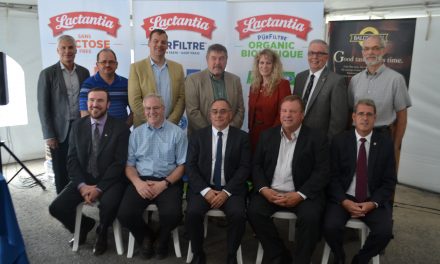By Terry Tinkess
AgriNews Staff Writer
In recent years, the global food landscape has witnessed a shift towards alternative proteins, driven by concerns over sustainability, environmental impact, and animal welfare. Consumers now have many plant-based options in addition to livestock products such as meat, milk, and egg. There is also the availability of cellularly produced items on the horizon.
Meat substitutes, plant based at least, are far from new. This trend may, to some degree, reshape consumer preferences which could, in turn, influence traditional agricultural practices.
In Eastern Ontario, where agriculture plays a vital role in the economy, the livestock sector has felt the effects of this transformative wave to some extent, but in the past 18 months consumer interest seems to have dropped, which has had a direct effect on sales. This could partially be a response to the rising cost of everything. With limited funds to work with, there is less of an interest in trying something new, staying instead with the known entity.
That doesn’t mean the threat is going away though. There are, and always will be variations of “alternative” available.
The newer option on the alternative protein shelf is cellular production. This process can be used to replicate most livestock products. The first cellularly produced “hamburger” made waves in 2013 with a price tag of over $300,000. Prices have dropped substantially since then, but they still have a long way to go before the average consumer would consider it as affordable.
A recent report from the Canadian Food Innovation Network documents investment in cellular production to be about $2.8 billion. A lot can change with that kind of investment.
Today, you can buy cellularly produced “chicken” nuggets in Singapore, and the U.S. recently gave approval for the sale of the same product. How though, will these options affect the livestock industry? It will depend on several factors such as development and acceptance of standards and regulations for cellular production, the ability to produce at scale, and for a reasonable price, and what is perhaps the biggest question mark: Will consumer interest turn into sustained buying patterns or simply be a curiosity?
There is also the question of how, exactly, the human body will process cellularly produced products. In a recent article, Mike McMorris, CEO of the Livestock Research Innovation Corporation cited a study by food scientist Michael Rogers at the University of Guelph that looked at digestion of the A&W Beyond Beef plant-based “burger” versus that of a real burger. Fat is attached much differently to protein in the Beyond Burger than in real meat, where it is intertwined. For real meat, the fat and protein bonds break down slowly over time while in the plant-based product, the bonds break very quickly, releasing high amounts of fat into the gut and bloodstream.
Rogers found that this quick release of fat has negative implications on the microbiome of the gut further downstream in the digestive system. These impacts are expected to be the same for cellularly produced products due to the way that fats and proteins are bound.
If alternative proteins gain traction, livestock farmers in Eastern Ontario could face new challenges. If demand for traditional meat products declines, it could impact the incomes of farmers who have relied on livestock production for generations. The Ontario Federation of Agriculture emphasizes the need for strategic adaptation, suggesting that farmers explore diversification strategies and consider incorporating sustainable practices to meet changing consumer demands (Ontario Federation of Agriculture, 2021).
Recognizing the need for support, the provincial government of Ontario has initiated programs to assist livestock farmers in transitioning to more sustainable practices. The Ontario Ministry of Agriculture, Food and Rural Affairs (OMAFRA) is actively promoting research and development in alternative protein sources. OMAFRA’s Sustainable Agriculture initiative encourages farmers to explore innovative approaches to remain competitive in the evolving market (OMAFRA, 2022).
While the shift towards alternative proteins presents challenges, it also opens doors for farmers in Eastern Ontario to diversify their operations. Some are exploring opportunities to integrate plant-based crops into their traditional farming practices. The adoption of regenerative agriculture, as highlighted by a report from the United Nations Food and Agriculture Organization, can contribute to soil health, biodiversity, and climate resilience (FAO, 2021). This approach allows farmers to respond to changing market demands while maintaining sustainable and resilient agricultural practices.












